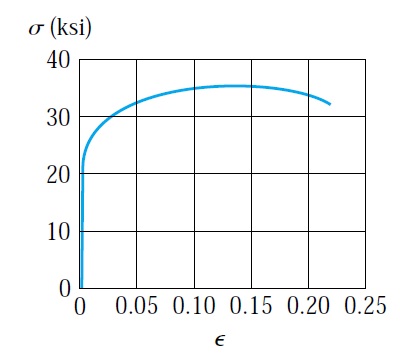Fiber Reinforced polymer for strengthening of reinforced concrete
Fiber-reinforced plastic (FRP) is a new technique to strengthen structures. Fiber-reinforced plastic has various types, such as a carbon-fiber-reinforced polymer (CFRP), glass fiber reinforced plastic (GFRP), and aramid fiber-reinforced polymer (AFRP). The below table shows the mechanical properties of different fiber types.
Table 1
we can notice that carbon fiber reinforced polymer possesses better properties compared to other types. For example, the tensile strength of CFRP extra-high strength can reach 6200 MPA compared to a maximum tensile strength of 4135 MPA of other fiber types. The FRP has various uses such as:
- Improved seismic performance of masonry walls
- Replacing missing steel reinforcement
- Increasing the strength and ductility of columns
- Increasing the loading capacity of structural elements
- Correcting structural design and/or construction defects
- Increasing resistance to seismic movement
- Improving service life and durability
- Structural upgrading to comply with current standards
The installation of FRP will pass through the following steps:
- In the beginning, we need to remove the weak layer of concrete to ensure good bonding between the FRP sheets and concrete. The removal of the weak concrete layer can be done by sandblasting or by grinding.
- The next step is to clean the concrete surface. The cleaning can be done by pressurized air or vacuum. The purpose of this step is to remove the dust and any other debris.
- Primer can be applied to improve the bonding between the concrete surface and the adhesive. The primer can form a barrier that prevents the concrete moisture from reaching the adhesive. The used primer should be compatible with the adhesive to ensure good bonding.
- The FRP surface should be cleaned with a solvent such as acetone to ensure proper bonding with an adhesive. Sometimes the surface of FRP is protected with a special protection layer peel-ply. In this case, cleaning of the FRP is not required. The Peel-layer will be removed before the applying of adhesive.
- Mixing of adhesive shall be according to manufacturing recommendation. The proportions of mixed ingredients shall be accurate and shall be respected to ensure proper adhesive bonding and performance.
- The next step is to apply the adhesive to FRP strips. The FRP shall completely cover the surface of FRP strips.
- The next step is to place the FRP strips in their location. The fixing of FRP strips should be placed during the adhesive pot life to ensure good bonding between the concrete and FRP strips. A sufficient number of workers should place the FRP strip to avoid the formation of air pockets or adhesive contamination.
- The surface of FRP strips should be protected. The protection system should be compatible with FRP and concrete.
Figure 1
Figure 2
Figure 3



















Extremely useful information which you have shared here about Adhesive. This is a great way to enhance knowledge for us, and also beneficial for us. Thank you for sharing an article like this.
ReplyDeleteSpray Adhesive
This article gives the light in which we can observe the reality. This is very nice one and gives indepth information. Thanks for this nice article. Foundation Repair San Antonio
ReplyDeleteThis is such a great resource that you are providing and you give it away for free. I love seeing blog that understand the value of providing a quality resource for free. Foundation Repair Gainesville FL
ReplyDeleteI think this is an informative post and it is very useful and knowledgeable. therefore, I would like to thank you for the efforts you have made in writing this article. Foundation repair fort Lauderdale FL
ReplyDeletecool stuff you have got and you keep update all of us. Foundation Repair Frisco TX
ReplyDeleteThis article gives the light in which we can observe the reality. This is very nice one and gives indepth information. Thanks for this nice article. Foundation Repair Gainesville FL
ReplyDeleteThis is very educational content and written well for a change. It's nice to see that some people still understand how to write a quality post.! Foundation Repair Longview TX
ReplyDeleteYou've created an excellent post about Pile Driving Company in Washington. Your blog gave me some unique and useful information. Thank you for bringing this article to our attention.
ReplyDeleteVacuum excavation equipment uses high-pressure air or water to precisely control soft excavation. Spoil is sucked through a vacuum hose and is deposited into a debris tank for later disposal, or for backfilling into the hole. The Prodigy uses either air or water as a non-destructive digging medium.Groundwork Contractors Wrexham
ReplyDeleteI have read all the comments and suggestions posted by the visitors for this article are very fine,We will wait for your next article so only.Thanks! Tampa FL Foundation Repair Company
ReplyDeleteThank you for sharing this blog, steel suppliers form the backbone of construction and manufacturing industries, facilitating seamless access to top-notch steel materials. With a commitment to quality and reliability, these suppliers ensure a diverse inventory to meet the varied demands of their clients. Their expertise in sourcing, logistics, and customer service establishes them as key partners in the supply chain. Whether for large-scale projects or smaller ventures, Steel Suppliers play a pivotal role in providing essential materials for a wide range of applications.
ReplyDelete